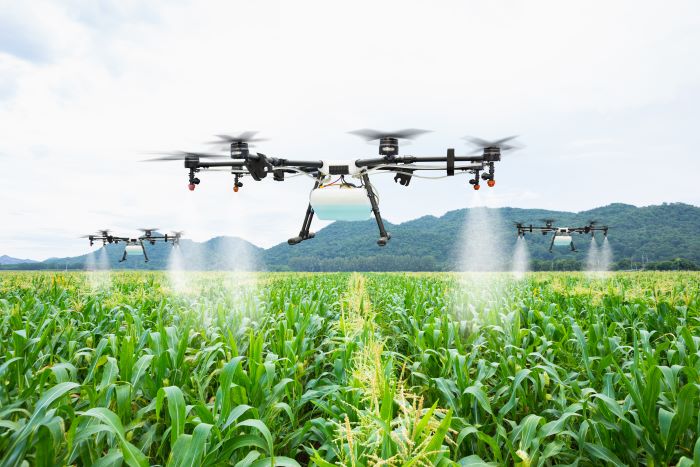Drone usage in agribusiness. A regulatory update
01 September 2023
Background
Over the past ten years the use of remote piloted aircraft (RPA) and unmanned aerial vehicles (UAV) (collectively referred to as drones in this article) in the agricultural sector has rapidly increased in all aspects ranging from crop monitoring to harvesting and planting. The first agriculture specific drones were developed in the early 2000s with the development of GPS systems for use in precision agriculture and drones designed for crop mapping and field analysis.
In Australia early drone usage is reported to have included the use of a fixed wing drone in 2009 to monitor a cattle farm in western Queensland where a Quadcopter was also used for weed spraying and later drones were used to detect locust swarms. In 2013 the Australian Almond Board was reported as using drones for crop estimation.
The growth has been so rapid that in 2020 it was estimated that one in ten agribusinesses in Australia were using drones and in May 2023, the Civil Aviation Safety Authority (CASA) issued a news article specific to drone safety rules for crop monitoring, spraying, livestock management and land surveying.
Drones are uniquely suited to Australian agribusiness where a combination of long distances in often isolated or difficult terrain, remote locations and extreme temperatures can make logistics and workflow management difficult. Without drones the agricultural sector has been reliant on satellite imagery, which is expensive, subject to weather limitations and not specific to agricultural needs.
An agridrone working a 10 hour day can spray between 300-500 acres a day depending on the size, load and battery capacity.
Some of the specific areas where drones are being deployed by agribusinesses include:
- crop mapping and field analysis to gather data used to assess crop health and estimate yields
- irrigation where drones are used to identify dry acreage, reduce water usage and redirect irrigation
- pesticide and weed spraying
- monitoring crops for stress, pests and disease
- livestock monitoring and counting
- planting and reseeding
- collecting soil and water samples, and
- harvesting, picking and pollinating.
Deloitte Access Economics predicted that drones have the potential to save the Australian agriculture, forestry and fisheries industries $2.95 billion over the next 20 years.
Regulatory situation
Drone usage has a myriad of regulatory, compliance and liability issues to be considered in order to get the maximum usage from the new technology. Laws exist at national, state and local government levels.
If you are using or are thinking of using drones in your agribusiness then it is essential that you have a well applied UAV strategy, which encompasses everything from drone registrations with CASA to pilots, flight mapping and insurance. Even if the drones are deployed over your own land there are regulatory issues to consider.
Here are just a few areas that should be on your checklist if you are or are thinking of deploying drones in your agribusiness.
- Do you have a specific drone strategy?
- Are your drones all registered on the CASA Drone Register?
- Do you have a drone specific risk register and risk assessment?
- Do you know what records you need to keep for drone related deployments?
Specific issues to be considered
Many organisations have started using drones because an employee has suggested a specific use and often that individual has used their personal drone to carry out the activity. If drones are deployed for any commercial use the business entity may need to be registered with CASA.
Different parts of the agricultural sector need to consider a range of issues before approving drone deployments including additional licensing requirements for aerial spraying. For example, Queensland requires a person to hold a RePL and state issued pilot chemical rating licence for aerial spraying even over property owned by the operator.
Liability issues to consider
As with any issue of liability there are insurance issues to consider whether it be for employees or members of the public.
Going forward
Drones are adding a new dimension to agribusiness and if managed properly are providing numerous opportunities that are cost effective and opening up new areas of exploration as well as management of existing issues.
However this exciting area comes with regulatory and compliance issues that need to be identified and managed.
We are here to help you with these issues so you can realise the cost savings and efficiencies within a regulatory framework than minimises your compliance risks.



